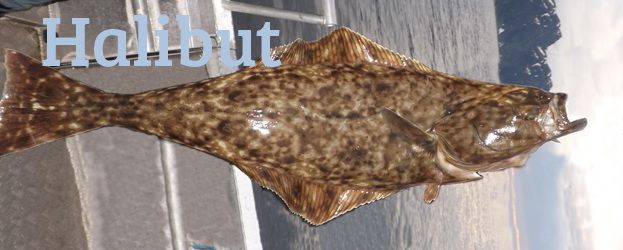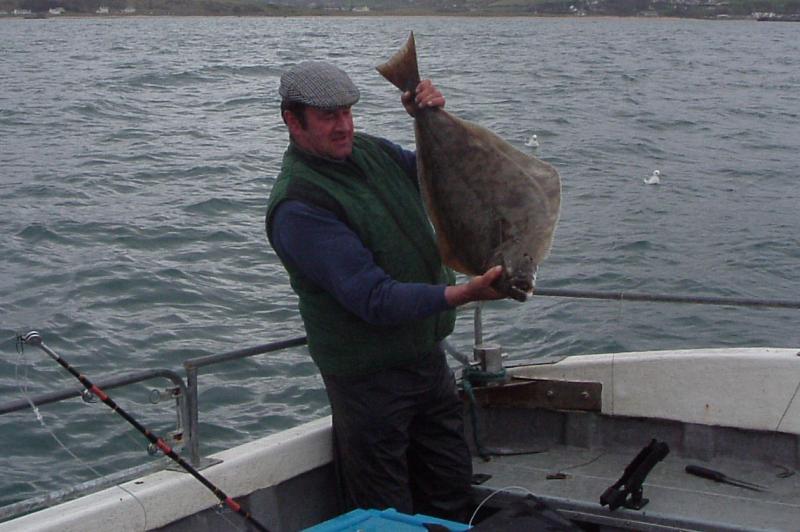Halibut
Halibut (Hippoglossus hippoglossus)
Irish Record 156 lb taken on 23.07.1972 by Frank Brogan at Belmullet.
Specimen 26.46lb, or 12kilo
Identification
If you are lucky enough to land this large flat-fish species in Irish waters, its main identification mark would be the awesome array of sharp teeth! The body is an elongated diamond shape with dorsal and anal fins running the length of the body. The under-belly is white or cream and the back a darker, mottled brown with lighter patches and patterns running through it. The lateral line has a prominent curve, rising over the pectoral fin.
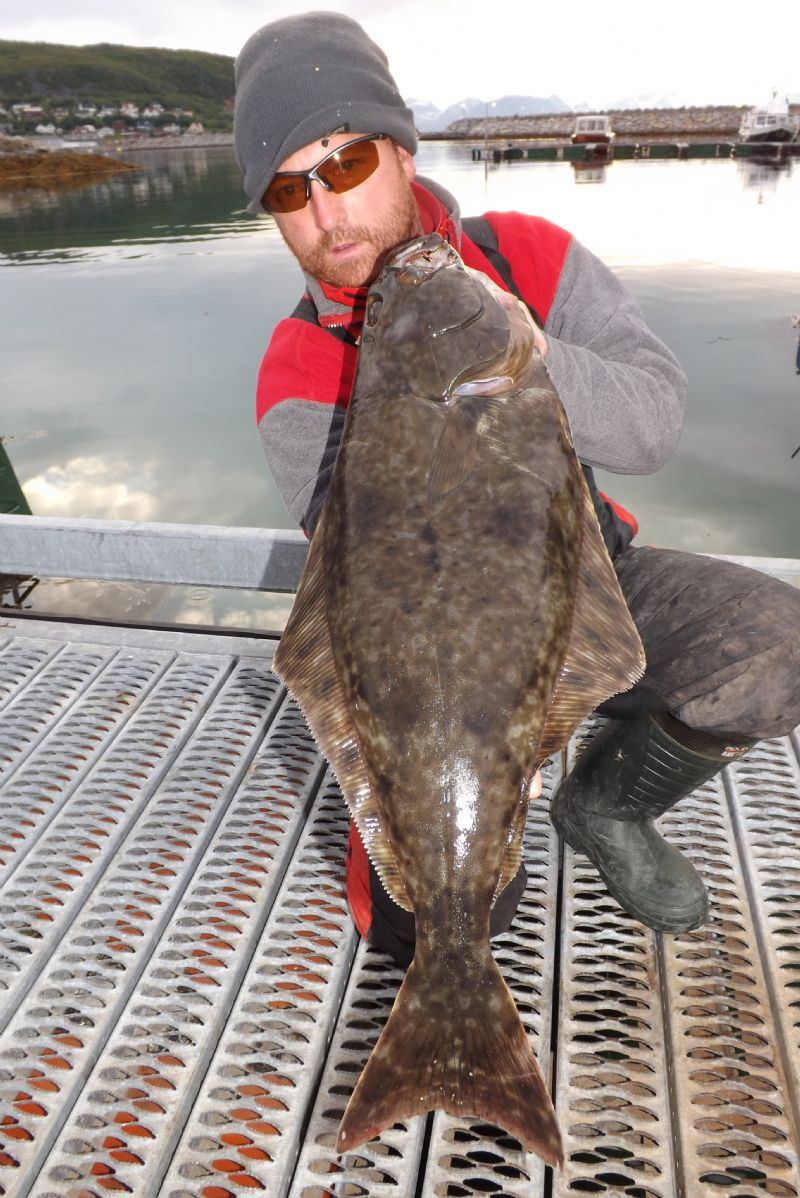 This Norwegian caught halibut photo kindly donated by Sidney Kennedy
This Norwegian caught halibut photo kindly donated by Sidney Kennedy
Where to catch
This species exists around the reefs and broken ground of Irish off-shore waters, and is rarely caught, but to be honest, un-like other northern countries, it is rarely fished for in earnest. Any taken are rare and usually caught by accident.
The popular mark, I believe was in and around “The Stags”, a group of pinnacles close to the headland of Bellmullet, however, having fished this mark, I can testify that it is a dangerous area at the best of times. Strong currents and large seas make conditions quite difficult, little wonder Halibut are rarely taken if they prefer these areas!
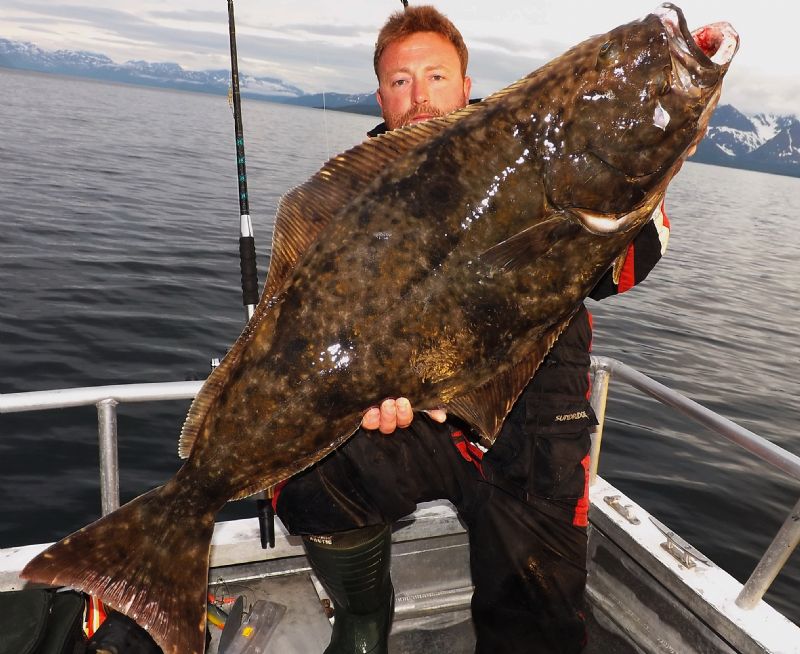
There is no doubt this species exists around our coast-line
I am absolutely convinced that if anglers began to target Halibut, we would begin to see specimens appearing now and then. There are many marks around Ireland, including the north coast that have perfect, under-water terrain to suit this amazing predatory flat fish. I have talked to divers that say they have witnessed huge fish quite regularly on the north coast off-shore reefs. Local commercial men have also picked up extremely large specimens from our waters over recent years. It is up to us, as anglers, to get out and find them.
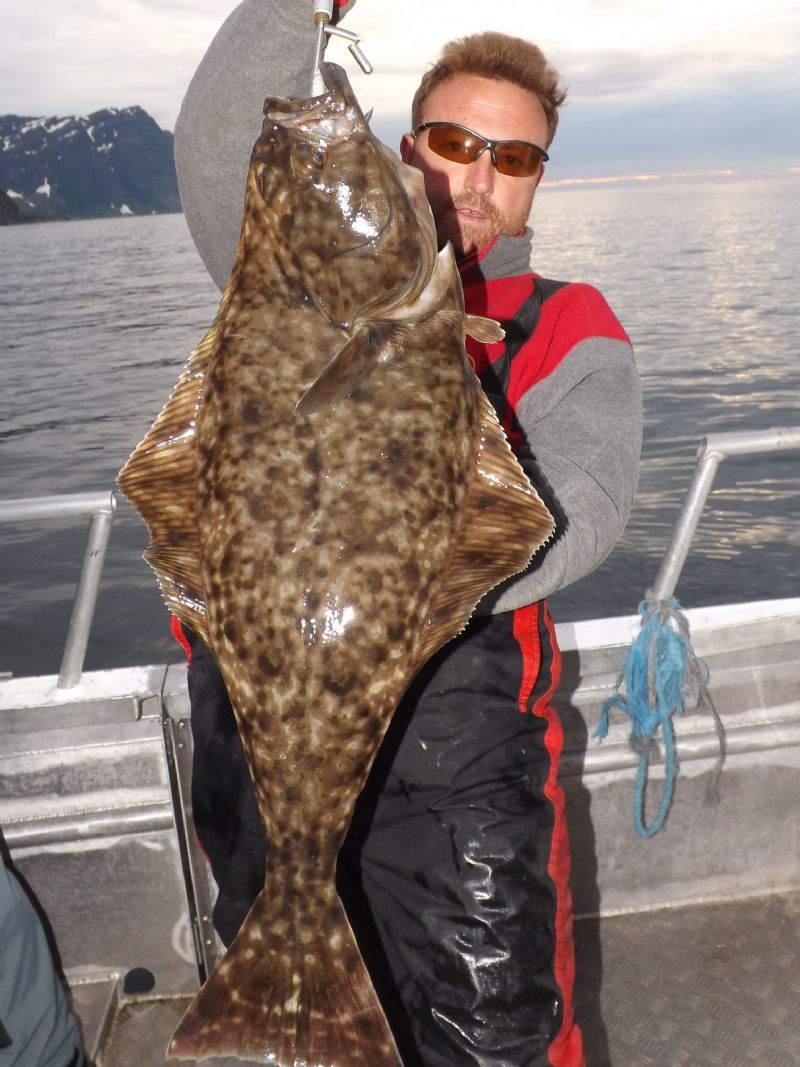
When to catch
Difficult to answer this one, as so few are caught. I suspect that they are present most of the year, but weather conditions and tidal currents make angling extremely difficult, if not impossible on most occasions over these in-hospitable areas.
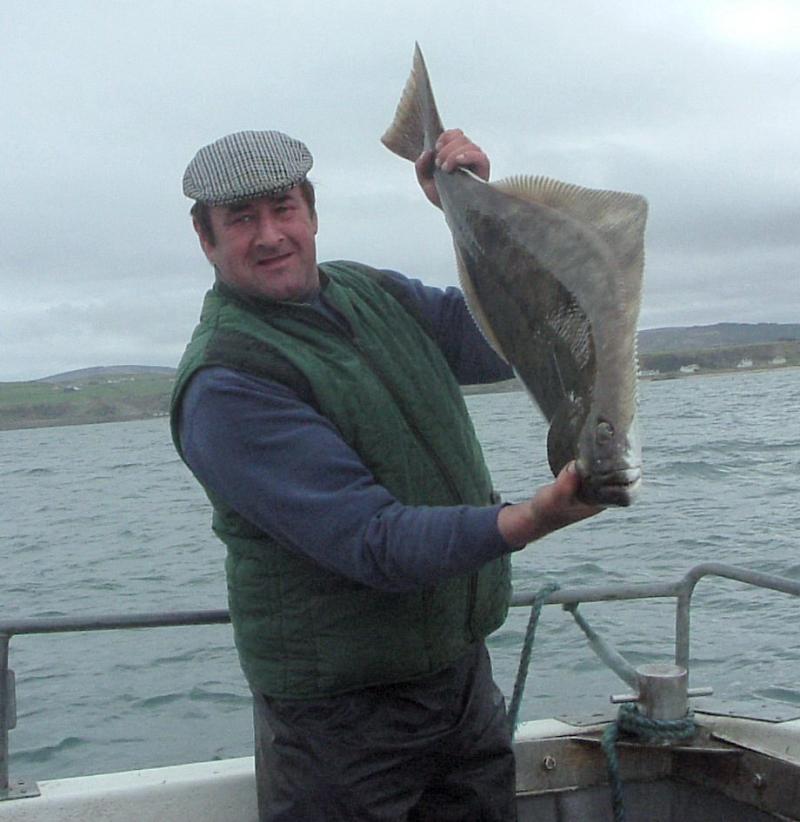
Bait
Watching Halibut in my local public sae aquarium, they are definitely not a typical flat fish. Rarely lying on the sea bed, they continually swim mid-water, hunting along deep ledges in search of prey. In the wild, they will actively hunt and devour Coalfish and Pollack and this is backed up when you read about the Halibut that are regularly caught in Norway. They fall victim to large lures retrieved through the water column, dead-baits and heavy pirks jigged over broken ground.
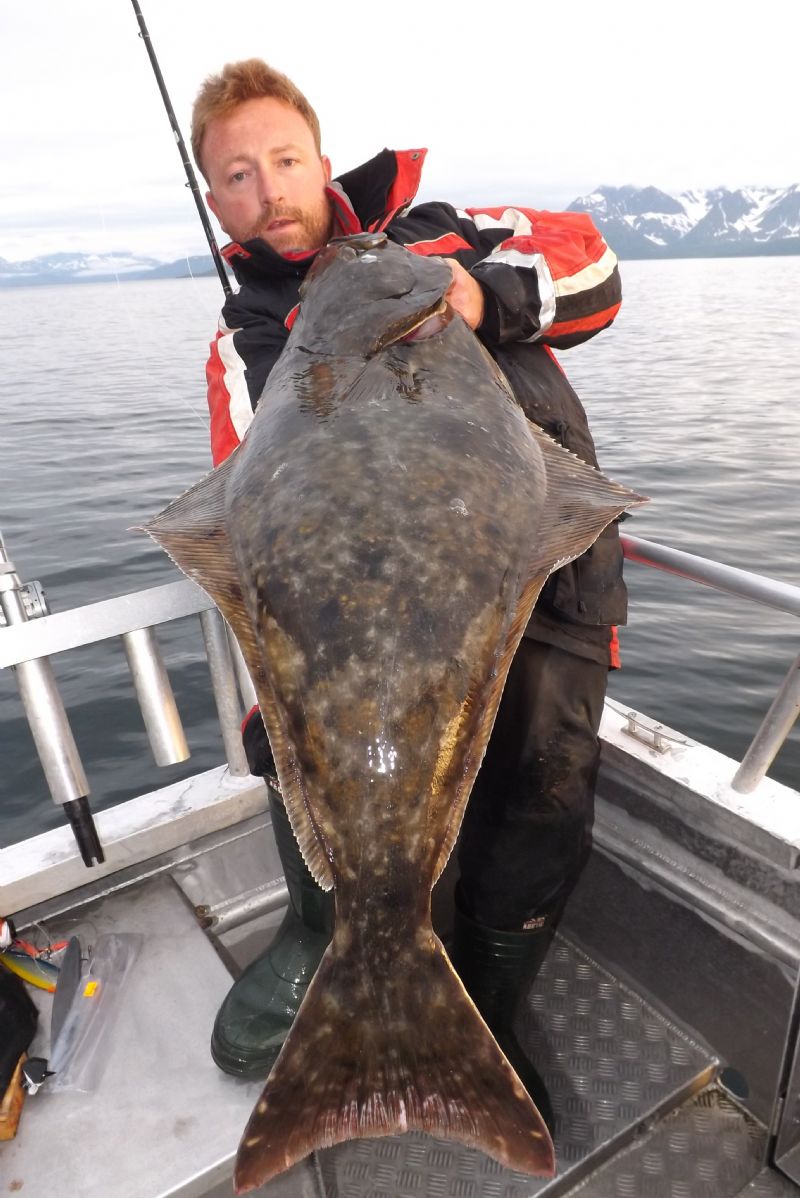
Methods
If I were to target Halibut in Ireland, and I really must have a crack at it, I think I would try to anchor alongside a vertical ledge and fish large Mackerel or Coalfish baits down the edge of the drop-off. Heavy gear of 30-50lb class would be the order of the day as I would not like to risk losing a genuine fish of a lifetime! In reality, I am only guessing here, but until someone goes out and actively looks for this species, all we can do is speculate.




